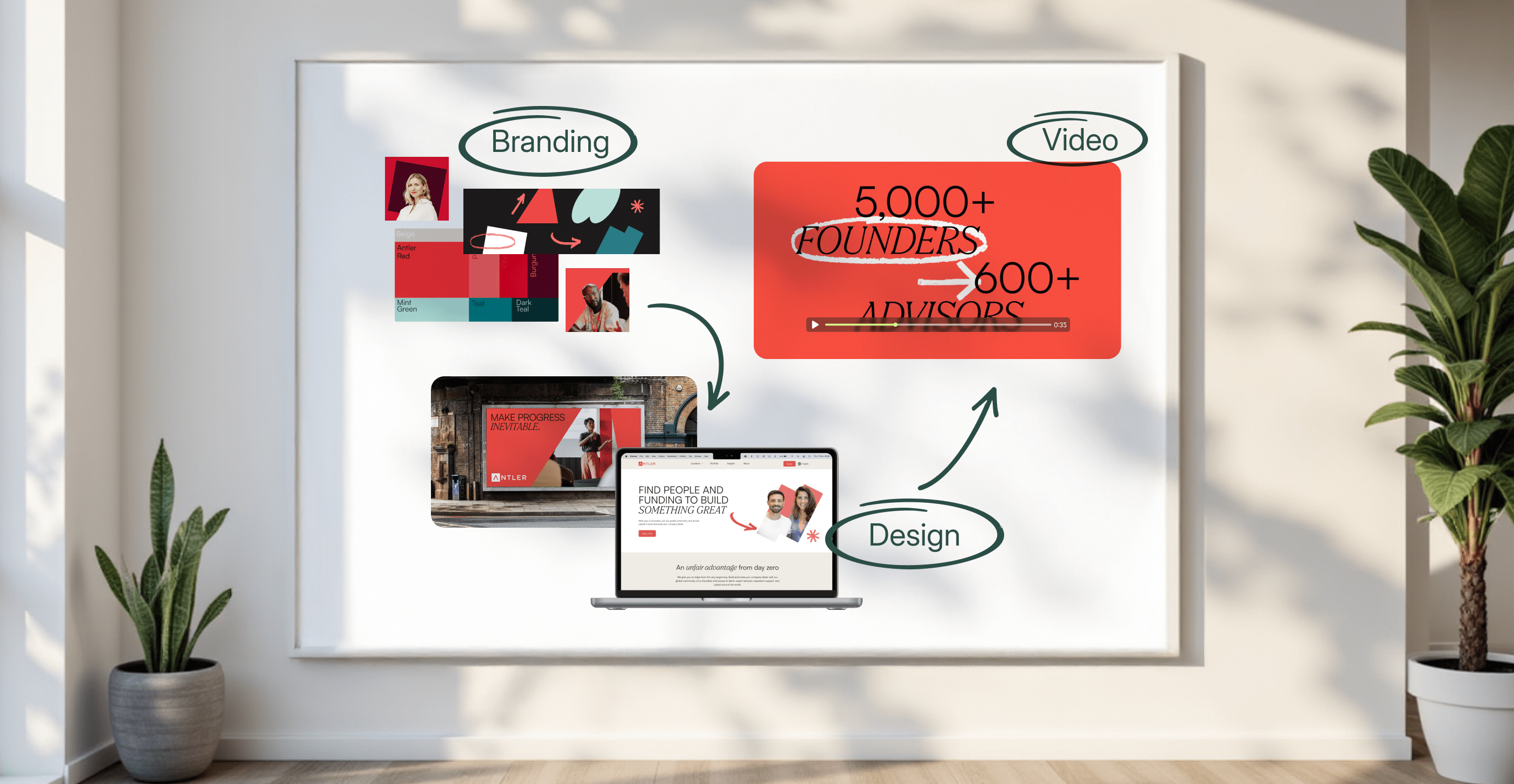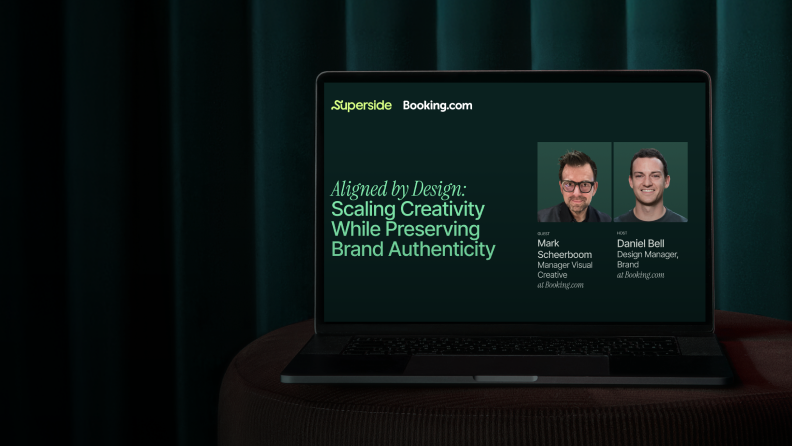How to write a brand positioning statement? 6 key steps

Brand positioning is crucial for standing out in a crowded market. It's about designing your brand's offering and image to occupy a distinct, top-of-mind place in your target customers' minds. Great branding and a solid statement helps you achieve this. Are you planning to rebrand or launch a sub-brand? You've come to the right place to start working on your brand's future success.
There are over 250 footwear brands worldwide, but which ones come to mind first when someone asks you to name a shoe company? Whether you say Nike, Adidas or Puma, these top-of-mind shoe brands all share something in common: mastering their positioning.
A brand or subbrand is more than a logo, a tagline or a color palette. It’s every interaction that your customers—and future customers—have with your company. The marketing and design teams at companies like Apple, McDonald's and Lululemon know that those interactions need a solid foundation.
That foundation is your brand positioning.
This post will break down what brand positioning is, help you figure out your brand positioning strategy and then help you craft the perfect brand positioning statement.
What is brand positioning?
Philip Kotler, the father of modern marketing, defined brand positioning as the act of designing the company’s offering and image to occupy a distinctive place in the target market's mind.
Kotler pushed for marketing to become a discipline back in the 1960s.
Nowadays, the best brand positioning does more than create a positive perception. It informs customers about what your product or service does and positions it as the right choice based on price, value, benefits and the problem it solves.
For example, take these two brand positions:
- Zune helps you “beam your beats” (because it had Bluetooth capabilities).
- Apple delivers a clear statement without the use of technical jargon.
Which one creates a positive outcome for the audience?
Brand positioning goals
The main goal of brand positioning is simple: you want customers to think of your business whenever they need what you offer.
And, to verbalize your brand positioning, you'll need a brand positioning statement (which we cover below). Then, all the work you put into the statement will help to create your brand package guide.
A brand package helps your design team create assets that communicate a consistent, cohesive message across all your marketing touchpoints—from slide decks to your website, packaging to billboards.
Do it right, and your brand becomes the iPhone (when people think of smartphones) or Heinz (when people think of ketchup).
Do it wrong, and your brand joins the ranks of the forgotten brands that might have had the right product but couldn’t find a way to connect with customers. Here’s looking at you, Netscape Navigator, Microsoft Zune and Pan Am Airlines (Who? Exactly).
Before you whip out the pen and paper, let’s quickly talk about brand strategy.
What does a brand positioning strategy look like?
(Source: Jiffy Behance)
Why do we buy what we buy at the supermarket? Peanut butter, for example, is just peanuts (yeah, sometimes oils, salt and sugar), but why do we reach for one over another?
Top brands know the best brand positioning strategies consist of points of differentiation and similarity between competitors and their target customers.
Take your brand from the target market to a target customer
Follow these steps to find your customer:
- Know your customer profiles like how much they use or need your product/service, when they shop and if they’re swayed by sales.
- Identify customer demographics like age, sex, income and family. It can go so far as to have geographic importance. Do you prefer B2B SaaS brands buying your services? You have to be really specific and intentional about it.
- Study their psychographics, including their lifestyles, interests, values and opinions.
Knowing all competitors will help you stand out
Follow these points to understand your competition:
- Don’t narrow your focus too much. Competitors can come from outside your product class. For peanut butter, include sesame butter and other “protein-rich” spreadable alternatives.
- Know your point of differentiation. What’s your unique selling proposition (USP)? Is it price, quality, or maybe you offer the widest range of peanut butter products (e.g., low sodium, only peanuts, creamy/chunky, etc.)
- Look for similarities. If a competitor brand also offers peanut butter pairings like jam, jelly, or chocolate spreadable, how would you expand into those verticals and stand out?
The 3 types of brand positioning
Choosing the type of brand positioning you use demonstrates your USP while also highlighting weaknesses in the competition.
While it sounds straightforward, there are multiple ways to position your brand based on the overall market, your customers and the competition.
Here are three of the most popular brand positioning strategies you can use:
- Convenience-based positioning. This strategy explains why your products or services are more convenient than the competition. From the ease of use of an app to a physical location for a store, these are features that appeal to customers who are often willing to pay more for a convenient solution.
- Price-based positioning. This strategy relates to affordability. By positioning your products or services as budget-friendly, you can appeal to an audience that values price over convenience or features. There is a risk that customers might associate low prices with low quality.
- Quality-based positioning. This strategy highlights the quality of your product compared to the competition and attempts to justify your higher price. Materials, testimonials, exclusivity, expertise and craftsmanship all feed into this position.
6 steps to develop a successful brand positioning statement (+ Infographic)
Use the napkin analogy for brand positioning statements: If you can’t write down what your product does and why it’s valuable on the back of a napkin, it’s too long.
That said, the process to get to the napkin starts with a full plate of messy food.
The perfect brand positioning statement is a short, snappy and succinct description that answers:
- Who is your brand for?
- What is your product or service category?
- What benefits does your brand provide?
- How do you prove those benefits?
Write your enterprise brand positioning statement that delivers on its promise
Whether you’re a new brand with a blank canvas or looking to refresh an existing brand, you’ll start by understanding your brand’s position in the market.
The infographic above is just the roadmap. The journey of a thousand miles begins with one step (we promise it’ll be shorter than a thousand miles, it’s just an analogy).
Step 1: Answer some key questions about your brand
Your brand positioning statement starts by asking:
- What sets your business apart from the competition?
- What are your company’s mission and values?
- What is your brand identity (e.g., voice, image, etc.)?
- Who are the specific customers you’re targeting, and what do they want to achieve using your product or service?
Pro tip: Only asking for internal input on these questions can result in a sampling bias.
Therefore, experts recommend surveying current and potential customers to understand how they view your brand and how they feel about the problem you’re trying to solve.
Your goal at this stage is to discover gaps in how you want people to perceive your brand versus how they actually perceive it.
Step 2: Analyze the competition to understand your strengths and how you differentiate
Imagine you’re a boxer preparing for a fight. Champion athletes and coaches know that investing time in researching and analyzing how their competition plays (or punches) will help them win.
The same logic works for crafting your brand positioning statement.
Choose five to ten of your closest competitors and conduct a thorough brand audit of their services.
Look at your competitors:
- Social media profiles. How often are they posting? Is there a cohesive style? What types of posts generate the most engagement?
- Reviews on third-party sites. What do the positive reviews consistently reflect? Read the negative thoughts and look for flaws in their product or service and exploit them.
- Website. What’s the vibe? What colors are they using? How's the UX and UI design? What kind of copy are they using? Use tools like SEMrush or Similarweb to get an idea of their high-traffic pages or pages with the most backlinks.
- Other channels. What can you learn from their ads? Are they retargeting their site visitors? What services are they promoting the most on billboards, flyers, or other offline channels?
Create a spreadsheet to build a competitive analysis on what they do right, where they have gaps and where you can find an edge to position your brand above theirs in the market.
Step 3: Map your brand position vs. the competition
A brand positioning map is a tool to help you see the relative position of competing brands based on how customers perceive them.
These maps are two-dimensional charts where you plot out your competitors according to the criteria that drive brand selection. These criteria will vary by brand and category and include quality, price, value, or taste.
Here’s an example:
Imagine you’re a new pizzeria competing against Pizza Hut, Domino’s and Papa John’s. In your competitor analysis, you spot differences in terms of price and quality.
On the brand positioning map, draw an X-axis with “inexpensive” on the left and “expensive” on the right. Then, on the Y-axis, write “premium” at the top and “budget” at the bottom.
You can plot each company on the map based on what you know about their menus’ prices and quality. Mapping out these different criteria lets you visualize how your business differentiates and find a customer base you can grow.
Methodology: Based on the current price of large cheese pizzas from each establishment and reviews from around the world wide web.
Step 4: Backing up your value
One of the core parts of your brand positioning statement is detailing the features, advantages and benefits your brand provides and what your target customers gain from picking your brand vs. the competition.
While a feature is easy to understand, many people confuse the advantages and benefits. An advantage is what the feature does and how it helps, and the benefit is how the consumer will ultimately use your product or service.
Our benefits, for example.
Saying what you do better, though, is only half of the work.
You also need to back up how you deliver on those claims—how do you guarantee the best price, the highest quality, or the ease of convenience?
This is the part of your positioning statement that becomes your brand promise. It typically lives at the end of your statement.
Break that promise, and you’ll lose your customers’ trust; keep the promise, and you’ll turn customers into advocates.
Step 5: Positioning statement—planting your flag in the ground
Brand positioning statements are supposed to be short, but that doesn’t mean they’re quick and easy to craft.
There’s no one way to write your statement—each one is unique to the brand writing it.
Here’s an easy fill-in-the-blank template for creating brand positioning statements if you need a little inspiration.
[Your brand name] is/delivers [the core benefit that separates your business from the rest] for [your target customer/market] because [why they should believe you].
Your statement might not fit it perfectly, but it’s a simple way of understanding the critical elements that go into a brand positioning statement.
Here are some examples of brand positioning statements done well:
Amazon
For consumers who want to purchase a wide range of products online with quick delivery, Amazon provides a one-stop online shopping site. Amazon sets itself apart from other online retailers with its customer obsession, passion for innovation and commitment to operational excellence.
Tesla
Tesla helps environmentally progressive people who want to protect their environment and save money over the long haul. Tesla uses software to update their model automobiles and solves the environmental issues of using gasoline by going electric. It is for customers who want a combination of savings, innovation and awareness.
Step 6: The final, yet critical part: get feedback
Once you’ve written your brand positioning statement, it’s time to go back to the beginning and test your statement with potential customers.
Getting feedback will help ensure you have the right core message before creating your brand package and assets. The best statements shape all your messaging.
Ensuring that this it right is critical for then act on your next brand efforts based on your foundations, such as your marketing and creative strategies.
Establish your enterprise brand positioning strategy with Superside
Creating great brand positioning gets everyone thinking in the same way and executing on the same promises, internally and externally.
Offering something different and separating yourself from the competition are critical tactics for generating demand for your brand and trust in your delivery.
It keeps you in your lane, connects to your ideal customer and focuses your efforts on them to yield better results.
If you are looking for enterprise-scaled creative support, we have you covered with our high-level branding services for rebrandings, subrands and fast-growing companies.
With a dedicated, AI-powered creative team and flat-rate subscription model, Superside delivers fast, consistent branding work that supports everything from rebrands to global campaigns. Is your new brand ready for this?
Jump to the right position with Superside.
FAQs
You may also like these

Why brands that build community get customers for life
Ads don’t seem to hit like they used to. Your customer acquisition cost is through the roof. And even when you do bring in customers, it feels like they’re only with you for a moment before disappearing forever. Some brands might be able to sustain their growth in these conditions, either because they have a massive war chest or their customers make massive transactions.But for most, there’s a better way to grow. By building a community and a fan base, you can get customers for life.At Superside’s Insider Summit, Ty Haney, three-time founder and current CEO of Try Your Best, shared how her approach to community has catapulted the brands she’s built to new heights—and how her latest venture has turned this into a business.What is community-led growth?In short? Shifting from acquiring customers to building a fan base. It means creating experiences that reward customers, granting them access to exclusive perks, and giving them something to get excited about beyond the transactional. It’s about giving them opportunities to become obsessed with your product and your brand until they become micro-influencers.
5 creative marketing services that change enterprises’ ROI in 2025
With digital advertising projected to bring in 73.2% of global ad spend, the pressure to consistently produce standout creative at scale is real. For a chance to connect with target customers, enterprise teams must now deliver high volumes of top-quality marketing creative across multiple channels.For most enterprises, increased output is only one part of the challenge. It’s usually just as tough to achieve consistency, speed and good results, especially if resources are limited. And limited they are: Our recent Overcommitted report confirmed that today’s creative teams simply juggle too much.Fortunately, many top marketing executives have come to realize their in-house creative departments can’t do it all themselves. Superside’s customers, for example, experience first-hand how a combination of strategy, data, AI-driven workflows and creative muscle can help them scale smarter, give bandwidth back to their teams and deliver a high ROI.Want to improve your creative production output and deliver eye-popping creative performance results? In this article, we explore what creative marketing is and how it can be applied in enterprise environments such as yours. In addition, meet the top creative marketing services that can help your enterprise achieve stronger results. Let's dive in!
9 tech branding agencies & examples that stand out (2025)
The technology market is thriving, with nearly 600,000 tech companies and new startups emerging monthly in the United States alone.In 2025, a tech brand needs more than a pretty logo and a catchy, innovative tagline to stand out. Your brand must connect emotionally with target customers at every touchpoint along the buyer’s journey.A specialized tech branding agency is an invaluable partner. Branding brilliance requires a deep understanding of your target audience and their pain points and knowledge of what other tech brands are putting out there.And that's when Superside flex muscles. 💪Our tech-savvy creative team provides unparalleled branding services and design support to leading tech companies, helping them build memorable brands.












